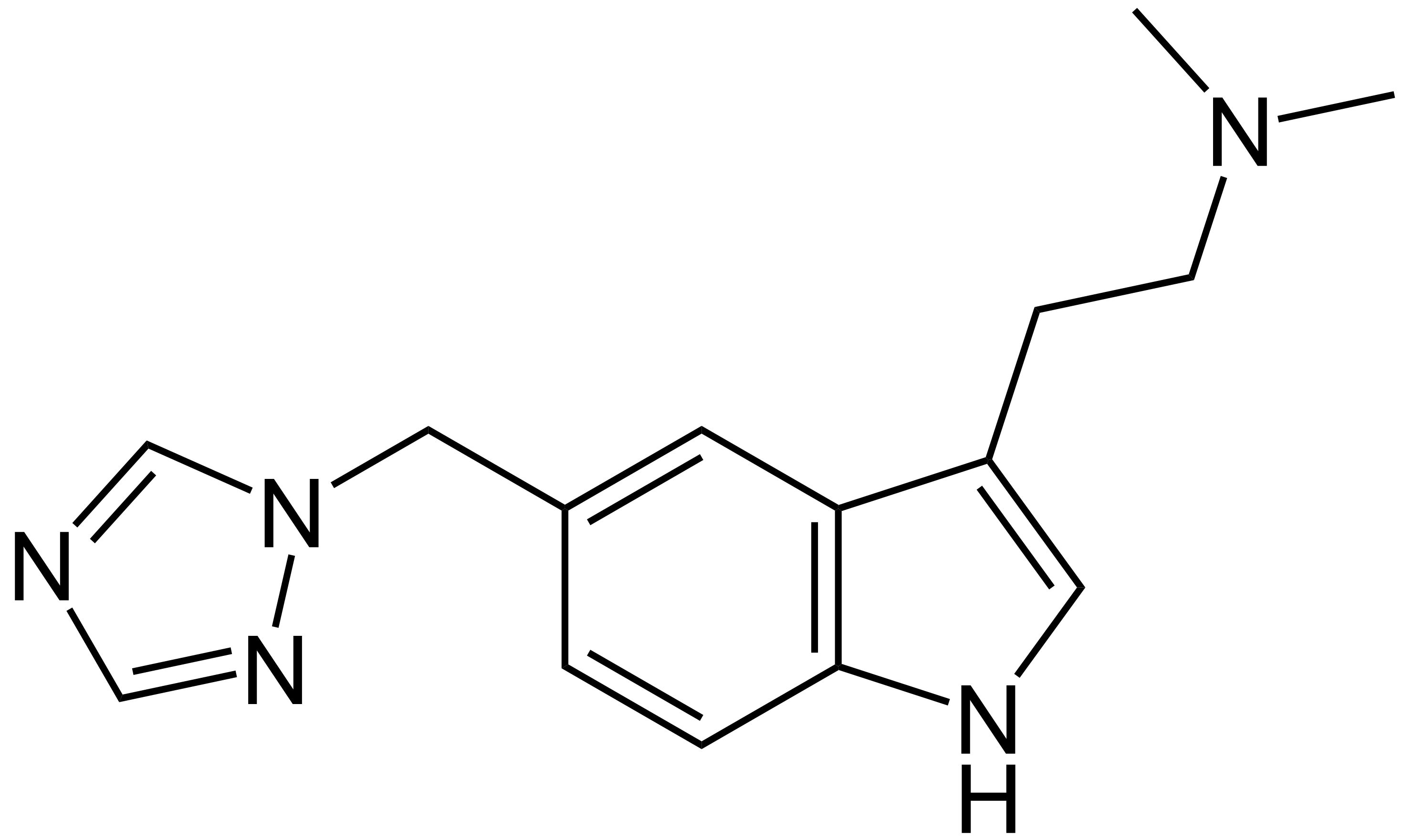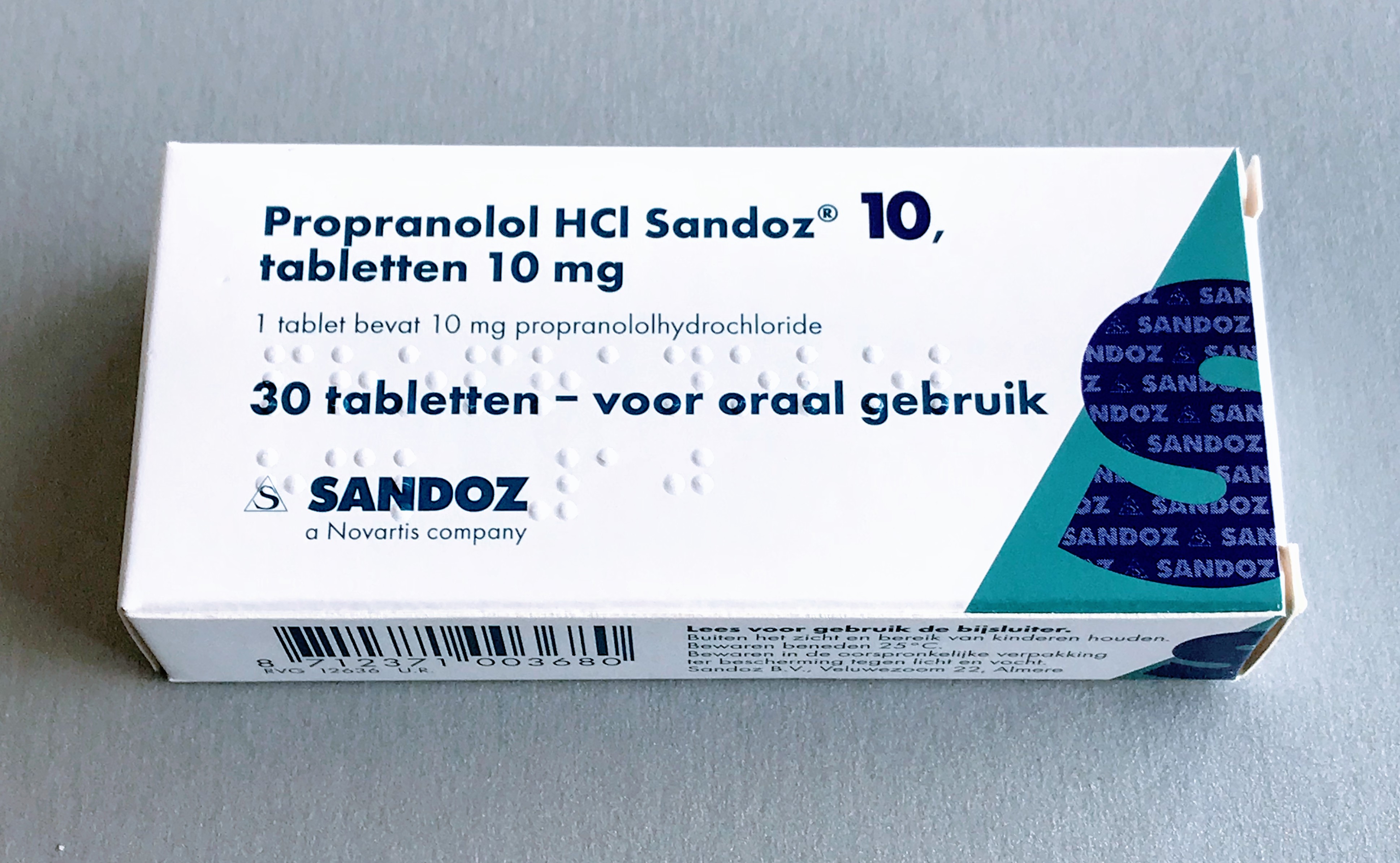|
Rizatriptan
Rizatriptan, sold under the brand name Maxalt among others, is a medication used for the treatment of migraine headaches. It is taken by mouth. It can also be applied on the tongue. It is a serotonin (5-HT) 1B/1D receptor agonist (triptan). Common side effects include chest pain, dizziness, dry mouth, and tingling. Other side effects may include myocardial infarction, stroke, high blood pressure, serotonin syndrome, and anaphylaxis. Excessive use may result in medication overuse headaches. Use is not recommended during pregnancy and breastfeeding is not recommended within 24 hours after taking a dose. Rizatriptan is in the triptan class and is believed to work by activating the 5-HT1 receptor. Rizatriptan was patented in 1991 and came into medical use in 1998. It is available as a generic medication. In 2022, it was the 190th most commonly prescribed medication in the United States, with more than two million prescriptions. Rizatriptan is available in combination with melox ... [...More Info...] [...Related Items...] OR: [Wikipedia] [Google] [Baidu] |
Meloxicam/rizatriptan
Meloxicam/rizatriptan, sold under the brand name Symbravo, is a fixed-dose combination medication used for the treatment of migraine. It is a combination of meloxicam, a nonsteroidal anti-inflammatory medication; and rizatriptan (as rizatriptan benzoate), a serotonin (5-HT) 1B/1D receptor agonist (triptan). The ratio in Symbravo is 20 mg meloxicam to 10 mg rizatriptan. It is taken by mouth. Meloxicam/rizatriptan was approved for medical use in the United States in January 2025. Medical uses Meloxicam/rizatriptan is indicated In medicine, an indication is a valid reason to use a certain test, medication, procedure, or surgery. There can be multiple indications to use a procedure or medication. An indication can commonly be confused with the term diagnosis. A diagnosis ... for the acute treatment of migraine with or without aura in adults. Society and culture Legal status Meloxicam/rizatriptan was approved for medical use in the United States in January 2025. Ref ... [...More Info...] [...Related Items...] OR: [Wikipedia] [Google] [Baidu] |
Triptan
Triptans are a family of tryptamine-based medication, drugs used as abortive medication in the treatment of migraines and cluster headaches. This drug class was first commercially introduced in the 1990s. While effective at treating individual headaches, they do not provide preventive treatment and are not considered a cure. They are not effective for the treatment of tension headache, tension–type headache, except in persons who also experience migraines. Triptans do not relieve other kinds of pain. The drugs of this class act as agonists for serotonin 5-HT1B receptor, 5-HT1B and 5-HT1D receptor, 5-HT1D receptors at blood vessels and nerve endings in the brain. The first clinically available triptan was sumatriptan, which has been marketed since 1991. Triptans have largely replaced ergotamines, an older class of medications used to relieve migraine and cluster headaches. Medical uses Migraine Triptans are used for the treatment of severe migraine attacks or those that do no ... [...More Info...] [...Related Items...] OR: [Wikipedia] [Google] [Baidu] |
Triptans
Triptans are a family of tryptamine-based drugs used as abortive medication in the treatment of migraines and cluster headaches. This drug class was first commercially introduced in the 1990s. While effective at treating individual headaches, they do not provide preventive treatment and are not considered a cure. They are not effective for the treatment of tension–type headache, except in persons who also experience migraines. Triptans do not relieve other kinds of pain. The drugs of this class act as agonists for serotonin 5-HT1B and 5-HT1D receptors at blood vessels and nerve endings in the brain. The first clinically available triptan was sumatriptan, which has been marketed since 1991. Triptans have largely replaced ergotamines, an older class of medications used to relieve migraine and cluster headaches. Medical uses Migraine Triptans are used for the treatment of severe migraine attacks or those that do not respond to NSAIDs or other over-the-counter drugs. Triptan ... [...More Info...] [...Related Items...] OR: [Wikipedia] [Google] [Baidu] |
Meloxicam
Meloxicam, sold under the brand name Mobic among others, is a nonsteroidal anti-inflammatory drug (NSAID) used to treat pain and inflammation in rheumatic diseases and osteoarthritis. It is taken by mouth or given by injection into a vein. It is recommended that it be used for as short a period as possible and at a low dose. Common side effects include abdominal pain, dizziness, swelling, headache, and a rash. Serious side effects may include heart disease, stroke, kidney problems, and stomach ulcers. Use is not recommended in the third trimester of pregnancy. It blocks cyclooxygenase-2 (COX-2) more than it blocks cyclooxygenase-1 (COX-1). It is in the oxicam family of chemicals and is closely related to piroxicam. Meloxicam was patented in 1977 and approved for medical use in the United States in 2000. It was developed by Boehringer Ingelheim and is available as a generic medication. In 2022, it was the 29th most commonly prescribed medication in the United States, w ... [...More Info...] [...Related Items...] OR: [Wikipedia] [Google] [Baidu] |
Monoamine Oxidase
Monoamine oxidases (MAO) () are a family of enzymes that catalyze the oxidation of monoamines, employing oxygen to clip off their amine group. They are found bound to the outer membrane of mitochondria in most cell types of the body. The first such enzyme was discovered in 1928 by Mary Bernheim in the liver and was named tyramine oxidase. The MAOs belong to the protein family of flavin-containing amine oxidoreductases. MAOs are important in the breakdown of monoamines ingested in food, and also serve to inactivate monoamine neurotransmitters. Because of the latter, they are involved in a number of psychiatric and neurological diseases, some of which can be treated with monoamine oxidase inhibitors (MAOIs) which block the action of MAOs. Subtypes and tissue distribution In humans there are two types of MAO: MAO-A and MAO-B. * Both are found in neurons and astroglia. * Outside the central nervous system: ** MAO-A is also found in the liver, pulmonary vascular end ... [...More Info...] [...Related Items...] OR: [Wikipedia] [Google] [Baidu] |
Zolmitriptan
Zolmitriptan, sold under the brand name Zomig among others, is a serotonergic drug, serotonergic medication which is used in the acute treatment of migraine attacks with or without aura (symptom), aura and cluster headaches. It is taken oral administration, by mouth as a swallowing, swallowed or orally disintegrating tablet, disintegrating tablet (pharmacy), tablet or as a nasal spray. Side effects include tightness in the neck or throat, Orofacial pain, jaw pain, dizziness, paresthesia, asthenia, somnolence, warm/cold sensations, nausea, chest pressure, and dry mouth. The drug acts as a binding selectivity, selective serotonin 5-HT1B receptor, 5-HT1B and 5-HT1D receptor, 5-HT1D receptor agonist. Chemical structure, Structurally, it is a triptan and a substituted tryptamine, tryptamine chemical derivative, derivative. It was patented in 1990 and was approved for medical use in 1997. Medical uses Migraine Zolmitriptan is used for the acute treatment of migraines with or witho ... [...More Info...] [...Related Items...] OR: [Wikipedia] [Google] [Baidu] |
Sumatriptan
Sumatriptan, sold under the brand name Imitrex among others, is a medication used to treat migraine headaches and cluster headaches. It is taken Oral administration, orally, Nasal administration, intranasally, or by Subcutaneous injection, subcutaneous Injection under the skin, injection. Therapeutic effects generally occur within three hours. Its primary effect as a serotonin 5-HT1B, 5-HT1B/5-HT1D receptor, 5-HT1D receptor agonist can create common side effects such as chest pressure, fatigue, vomiting, tingling, and vertigo. Serious side effects may include serotonin syndrome, heart attack, stroke, and seizures. With excessive use, medication overuse headaches may occur. It is unclear if use during pregnancy or breastfeeding is safe. The mechanism of action is not entirely clear. It is in the triptan class of medications. Sumatriptan was patented in 1982 and approved for medical use in 1991. It is on the WHO Model List of Essential Medicines, World Health Organization's L ... [...More Info...] [...Related Items...] OR: [Wikipedia] [Google] [Baidu] |
5-HT1D
5-hydroxytryptamine (serotonin) receptor 1D, also known as HTR1D, is a 5-HT receptor, but also denotes the human gene encoding it. 5-HT1D acts on the central nervous system, and affects locomotion and anxiety. It also induces vasoconstriction in the brain. Tissue distribution 5HT1D receptors are found at low levels in the basal ganglia (globus pallidus, substantia nigra, caudate putamen), the hippocampus, and in the cortex. Structure 5HT1D receptor is a G protein linked receptor that activates an intracellular messenger cascade to produce an inhibitory response by decreasing cellular levels of cAMP. The 5HT1D is a 7-TM receptor. A large intercellular loop between TM-5 and TM-6 is believed to be associated with coupling to a second messenger. Agonists might bind in a manner that utilizes an aspartate residue in TM-3 and residues in the TM-4, TM-5 and TM-6. A human clone containing an intronless open reading frame was found to encode 377 amino acids of the 5HT1D receptor. The ... [...More Info...] [...Related Items...] OR: [Wikipedia] [Google] [Baidu] |
5-HT1B
5-hydroxytryptamine receptor 1B also known as the 5-HT1B receptor is a protein that in humans is encoded by the ''HTR1B'' gene. The 5-HT1B receptor is a 5-HT receptor subtype. Tissue distribution and function 5-HT1B receptors are widely distributed throughout the central nervous system with the highest concentrations found in the frontal cortex, basal ganglia, striatum, and the hippocampus. The function of the 5-HT1B receptor differs depending upon its location. In the frontal cortex, it is believed to act as a terminal receptor inhibiting the release of dopamine. In the basal ganglia and the striatum, evidence suggests 5-HT signaling acts on an autoreceptor, inhibiting the release of serotonin and decreasing glutamatergic transmission by reducing miniature excitatory postsynaptic potential (mEPSP) frequency, respectively. In the hippocampus, a recent study has demonstrated that activation of postsynaptic 5-HT1B heteroreceptors produces a facilitation in excitatory synaptic ... [...More Info...] [...Related Items...] OR: [Wikipedia] [Google] [Baidu] |
Propranolol
Propranolol is a medication of the beta blocker class. It is used to treat hypertension, high blood pressure, some types of cardiac dysrhythmia, irregular heart rate, thyrotoxicosis, capillary hemangiomas, akathisia, performance anxiety, and essential tremors, as well to prevent migraine headaches, and to prevent further heart problems in those with angina or previous myocardial infarction, heart attacks. It can be taken oral administration, orally or by intravenous injection. The formulation that is taken orally comes in short-acting and long-acting versions. Propranolol appears in the blood after 30 minutes and has a maximum effect between 60 and 90 minutes when taken orally. Common side effects include nausea, abdominal pain, and constipation. It may worsen the symptoms of asthma. Propranolol may cause teratogen, harmful effects for the baby if taken during pregnancy; however, its use during breastfeeding is generally considered to be safe. It is a non-selective beta block ... [...More Info...] [...Related Items...] OR: [Wikipedia] [Google] [Baidu] |
Aura (symptom)
An aura is a perceptual disturbance experienced by some with epilepsy or migraine. An epileptic aura is actually a minor seizure. Epileptic and migraine auras are due to the involvement of specific areas of the brain, which are those that determine the symptoms of the aura. Therefore, if the visual area is affected, the aura will consist of visual symptoms, while if a sensory one, then sensory symptoms will occur. Epileptic auras are subjective sensory or psychic phenomena due to a focal seizure, i.e. a seizure that originates from that area of the brain responsible for the function which then expresses itself with the symptoms of the aura. It is important because it makes it clear where the alteration causing the seizure is located. An epileptic aura is in most cases followed by other manifestations of a seizure, for example a convulsion, since the epileptic discharge spreads to other parts of the brain. Rarely it remains isolated. Auras, when they occur, allow some people who h ... [...More Info...] [...Related Items...] OR: [Wikipedia] [Google] [Baidu] |



